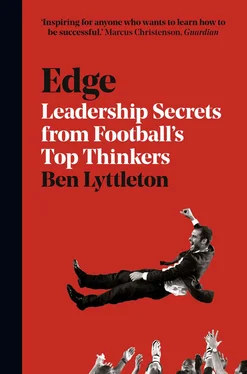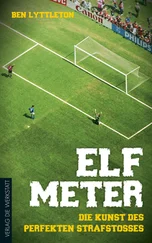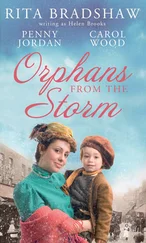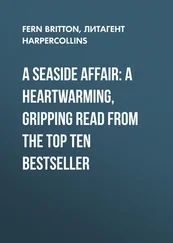CONTENTS Cover Title Page Copyright Dedication Prologue 1 Cohesion 2 Adaptability 3 Decision-Making 4 Resilience 5 Creativity Epilogue Notes Bibliography Acknowledgements Index About the Author About the Publisher
COPYRIGHT CONTENTS Cover Title Page Copyright Dedication Prologue 1 Cohesion 2 Adaptability 3 Decision-Making 4 Resilience 5 Creativity Epilogue Notes Bibliography Acknowledgements Index About the Author About the Publisher
HarperCollins Publishers
1 London Bridge Street
London SE1 9GF
www.harpercollins.co.uk
First published by HarperCollins Publishers 2017
SECOND EDITION
© Ben Lyttleton 2017
Cover layout design by Steve Leard
Cover photograph © Shutterstock
Athletic Club de Bilbao plaque poem © Kirmen Uribe
Exploratory Behaviour Frequency charts © G. Jordet, J. Bloomfield & J. Heijmerikx
A catalogue record of this book is available from the British Library
Ben Lyttleton asserts the moral right to be identified as the author of this work
All rights reserved under International and Pan-American Copyright Conventions. By payment of the required fees, you have been granted the nonexclusive, non-transferable right to access and read the text of this e-book on screen. No part of this text may be reproduced, transmitted, downloaded, decompiled, reverse engineered, or stored in or introduced into any information storage retrieval system, in any form or by any means, whether electronic or mechanical, now known or hereinafter invented, without the express written permission of HarperCollins e-books.
Find out about HarperCollins and the environment at
www.harpercollins.co.uk/green
Source ISBN: 9780008226398
Ebook Edition © September 2017 ISBN: 9780008225889
Version: 2018-02-05
DEDICATION CONTENTS Cover Title Page Copyright Dedication Prologue 1 Cohesion 2 Adaptability 3 Decision-Making 4 Resilience 5 Creativity Epilogue Notes Bibliography Acknowledgements Index About the Author About the Publisher
To ABC, with love
Cover
Title Page CONTENTS Cover Title Page Copyright Dedication Prologue 1 Cohesion 2 Adaptability 3 Decision-Making 4 Resilience 5 Creativity Epilogue Notes Bibliography Acknowledgements Index About the Author About the Publisher
Copyright COPYRIGHT CONTENTS Cover Title Page Copyright Dedication Prologue 1 Cohesion 2 Adaptability 3 Decision-Making 4 Resilience 5 Creativity Epilogue Notes Bibliography Acknowledgements Index About the Author About the Publisher HarperCollins Publishers 1 London Bridge Street London SE1 9GF www.harpercollins.co.uk First published by HarperCollins Publishers 2017 SECOND EDITION © Ben Lyttleton 2017 Cover layout design by Steve Leard Cover photograph © Shutterstock Athletic Club de Bilbao plaque poem © Kirmen Uribe Exploratory Behaviour Frequency charts © G. Jordet, J. Bloomfield & J. Heijmerikx A catalogue record of this book is available from the British Library Ben Lyttleton asserts the moral right to be identified as the author of this work All rights reserved under International and Pan-American Copyright Conventions. By payment of the required fees, you have been granted the nonexclusive, non-transferable right to access and read the text of this e-book on screen. No part of this text may be reproduced, transmitted, downloaded, decompiled, reverse engineered, or stored in or introduced into any information storage retrieval system, in any form or by any means, whether electronic or mechanical, now known or hereinafter invented, without the express written permission of HarperCollins e-books. Find out about HarperCollins and the environment at www.harpercollins.co.uk/green Source ISBN: 9780008226398 Ebook Edition © September 2017 ISBN: 9780008225889 Version: 2018-02-05
Dedication DEDICATION CONTENTS Cover Title Page Copyright Dedication Prologue 1 Cohesion 2 Adaptability 3 Decision-Making 4 Resilience 5 Creativity Epilogue Notes Bibliography Acknowledgements Index About the Author About the Publisher To ABC, with love
Prologue
1 Cohesion
2 Adaptability
3 Decision-Making
4 Resilience
5 Creativity
Epilogue
Notes
Bibliography
Acknowledgements
Index
About the Author
About the Publisher
As soon as I took the call, I knew it was a great idea. It was summer 2014 and I had just spoken to Marcus Christenson, Football Editor at the Guardian newspaper. His plan was to tap into the football expertise of his global network and publish a piece called ‘Next Generation’. It would identify the top 60 players around the world aged 17 or below.
The feature would run every year, and readers would be able to track previously listed players and check on their progress. It was also quite brave, because if, in three years, say, 55 of the 60 players named had dropped out of football, no one would look too clever.
He asked me to come up with two players who were based in France. I have always been enchanted by French football and have written extensively about the game there. But I did not know all that much about the next generation, and when it came to that age group, it was more like the generation after next.
I called up some of my contacts in the French game and they helped me draw up a shortlist of five names. I had to narrow it down. I looked at video footage of the players but that didn’t help; they all played in different positions anyway. So I went back to Marcus and asked what he wanted. Was it the most talented players? Or the ones most likely to make it? He wanted both: basically, a feature that would become an annual celebration of the Guardian ’s football knowledge pool. ‘We just want to get it right,’ he said.
This made me think. Would the most talented players be the ones most likely to make it? I asked a friend, a Premier League scout whose speciality was spotting youth-team players in northern France. ‘Not at all,’ he replied. He was looking for players who influence games, whatever their position. This is not just a matter of technique or skill; it’s about working off the ball, and how they react to losing the ball.
So what is he looking for? ‘Resilience,’ he said. Most scouts focus on the six seconds after a player loses the ball to check for reaction, but my friend keeps an eye on them for ten minutes. One youngster missed a chance to score and spent the rest of the half shaking his head and hitting his thigh in disgust with himself. He was crossed off the list. ‘He was nervous when he next got the ball and he won’t grow out of that.’
He also talked about adaptability: how a player fits in socially with those around him, and extrapolated that to the potential new contexts that might await him. It was also important that he had a general respect for team-mates and the coach, and a simple enjoyment of the game. ‘You can spot the ones who don’t want to be there a mile off.’ There is a lot more to his job than interpreting body language and the odd behavioural trait. But he made it clear just how many aspects there are to assessing talent.
This was my chance to have a go at it. I had five players whose talent was not in question. Four had been capped by France at Under-17 level, and they were all playing in academies with a good record of bringing players through: Toulouse, Lens, Valenciennes, Rennes and Paris Saint-Germain. I had to narrow it down to two names.
I made more calls and this time was specific about my questions. ‘What’s his attitude like? How does he react to difficult situations? How motivated is he? Does he get on well with people? Is he adaptable?’ There was a lot more fluctuation in the answers to these questions.
Читать дальше












